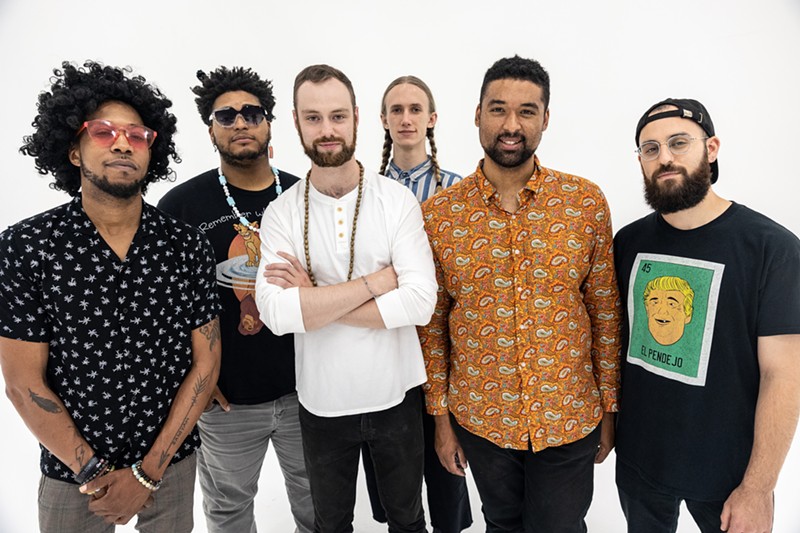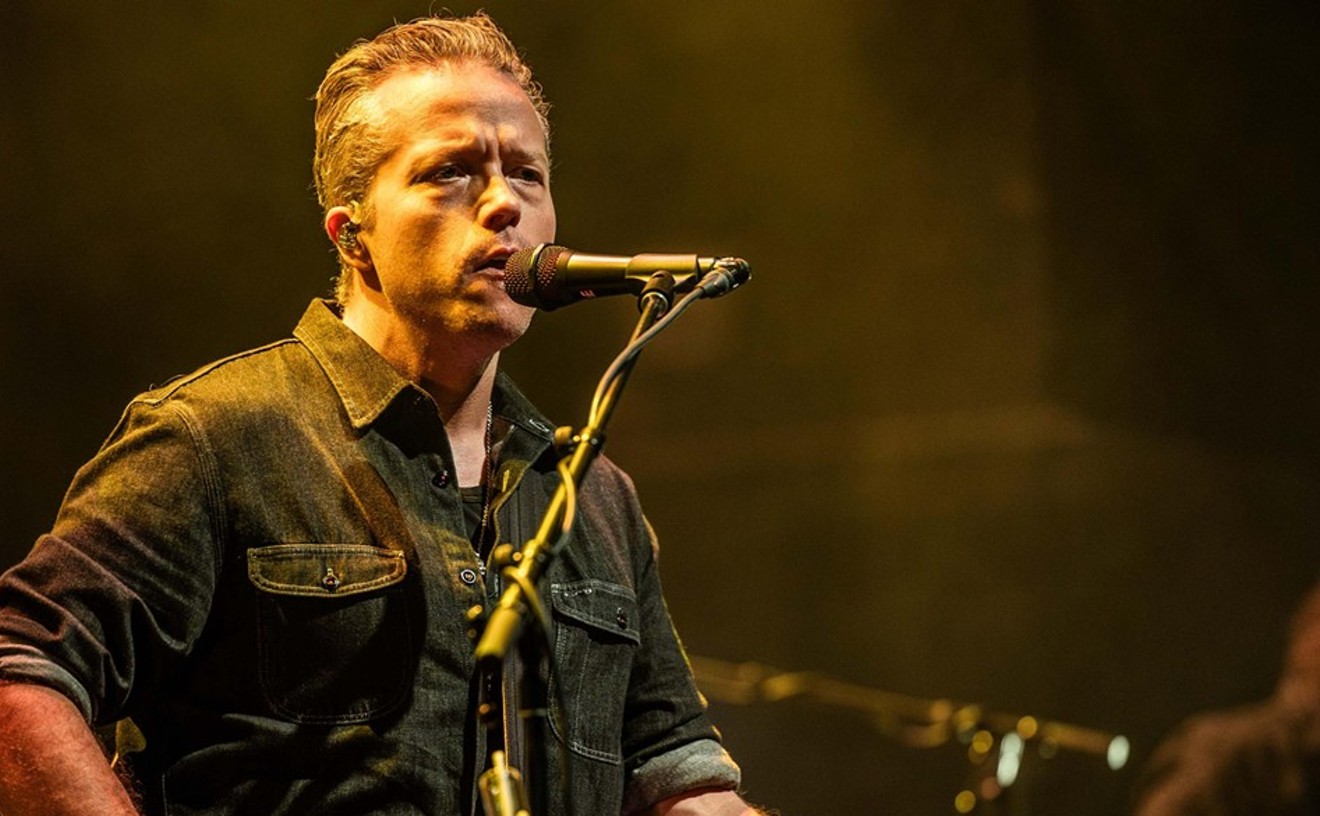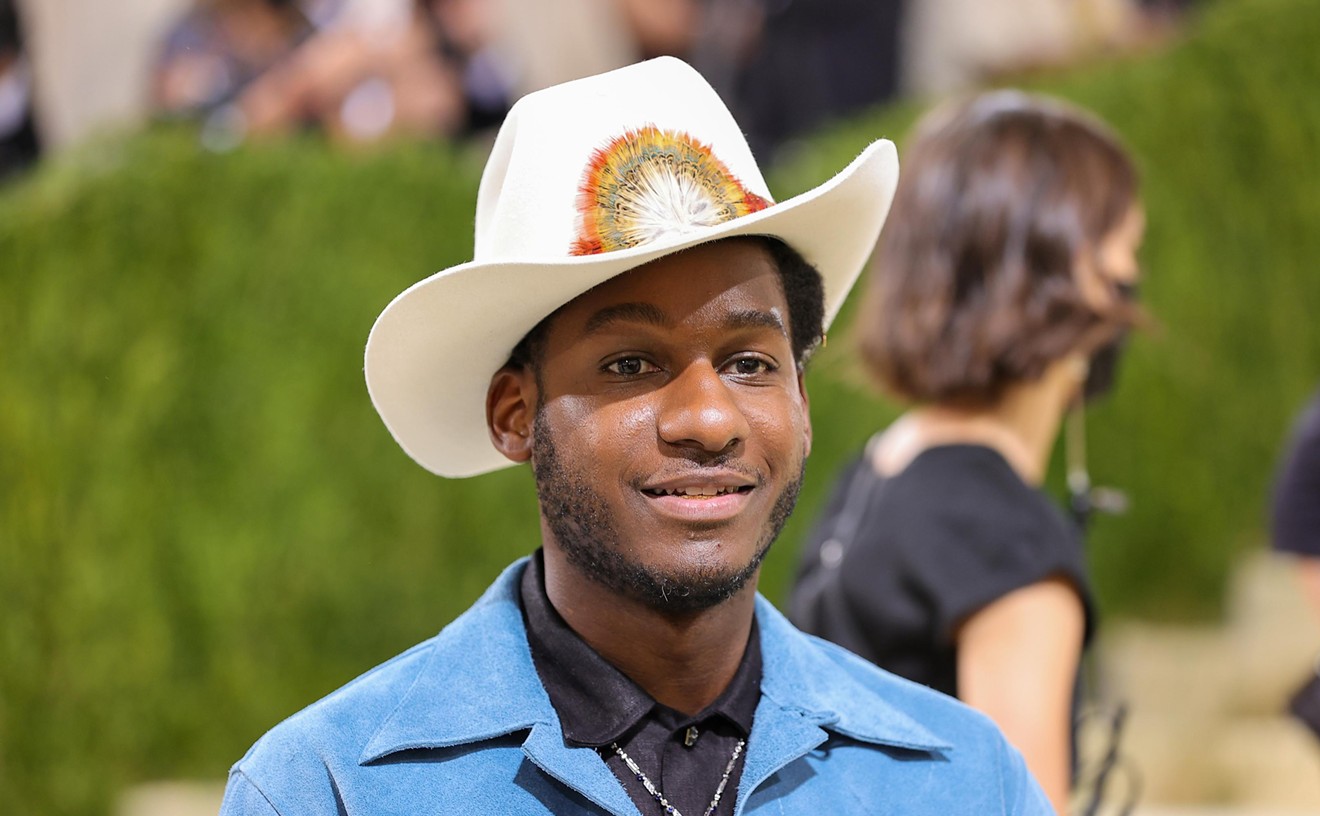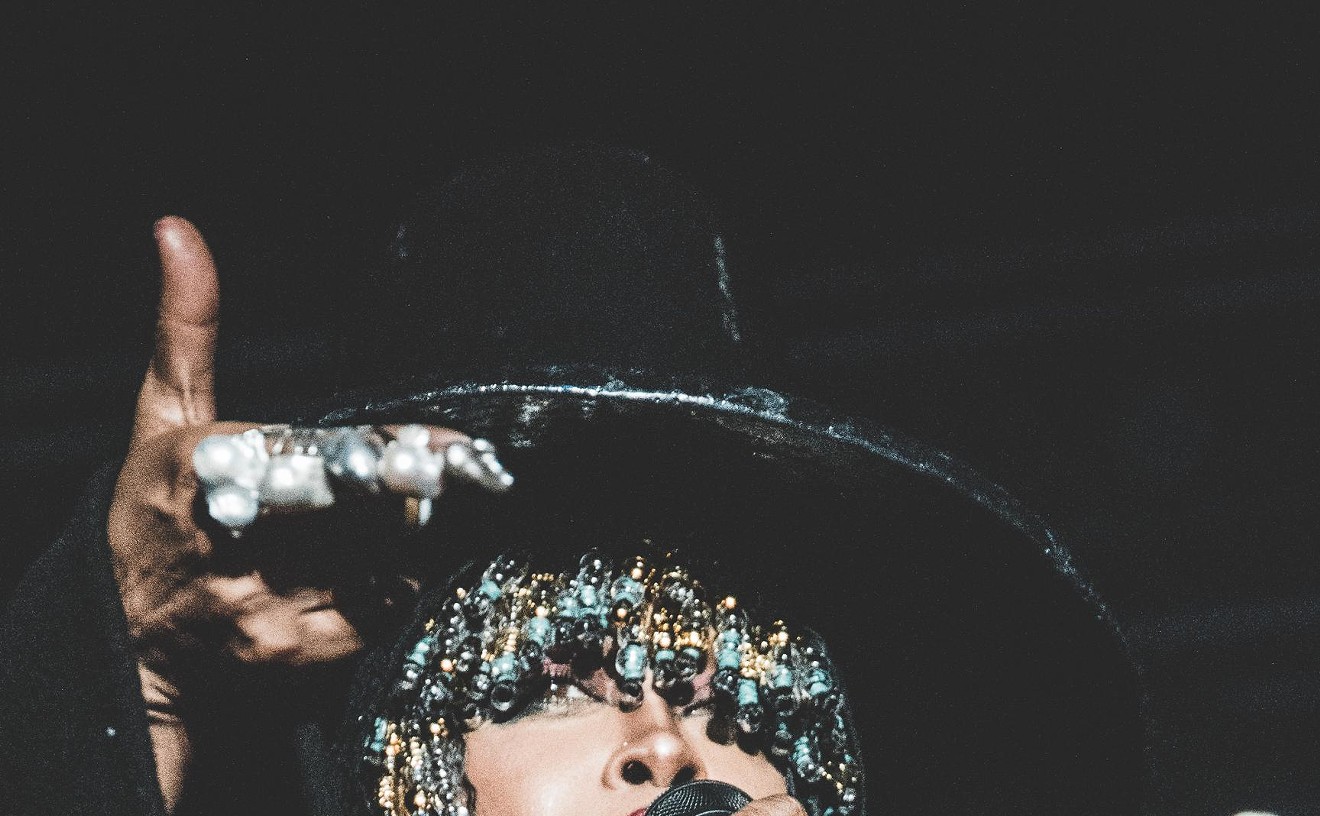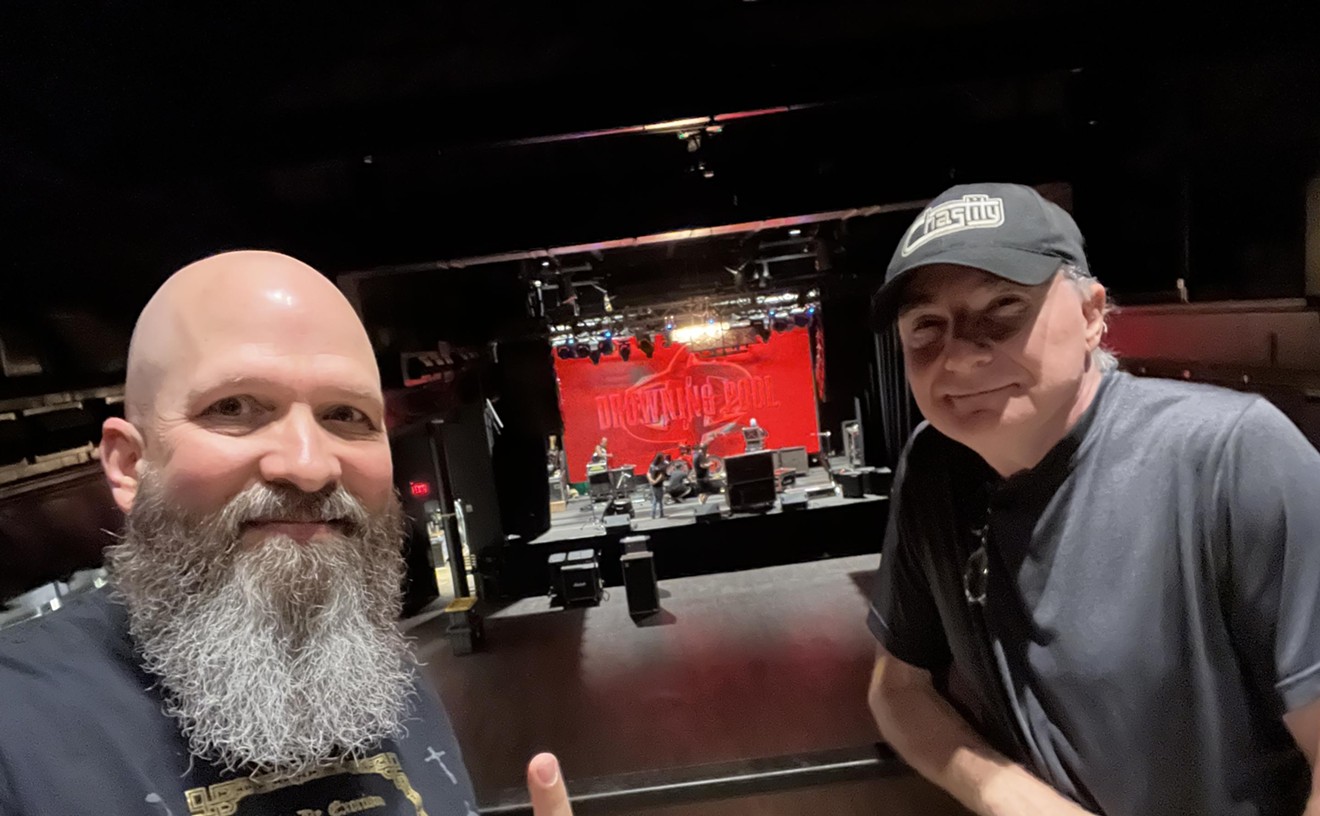The project is not a misplaced David Lynch script, but a new Dallas band. Wasafiri and the group’s debut album Klearlight will take you to the moon and back, with no need for illicit or recreational substances.
Wasafiri is the brainchild of two well-known jazz and hip-hop heads, Luke Sardello (managing partner of Josey Records) and Skin Wade of The Ben and Skin Show. Sardello and Wade go back more than 20 years, their friendship having been forged in the fires of obsessive crate digging in the '90s. The pair looked for the best acid jazz and hip-hop records they could get their hands on, emerging from one rabbit hole just to find another.
At the time, Sardello worked at Bill’s Records, giving him easy access to getting high on his own supply. Long before the two ever considered starting their own label — Eastwood Music Group, which is the current home to Bastards of Soul — they had a vision. They wanted to start a band and make a record based on a simple feeling.
"When Luke and I started the label, we basically ... we wanted to put out records that we used to buy and still want to buy," says Wade. "And so Wasafiri was specifically created to do kind of jazz funk fusion records from the '70s that when we first got into record buying in our late teens and early 20s, those were the records that we sought out."
Two decades later, the pair saw their chance to create their dream band after meeting young jazz composer and bassist Max Gerl, a graduate of the Booker T. Washington High School for the Performing and Visual Arts and an alumnus of Berklee College of Music. Gerl contributed a track to Eastwood Music Group’s Truth to Power Project, a collaborative effort with a focus on social consciousness.
With the financial help of the Dallas Mavericks and Universal Music Group, artists such as Leon Bridges, Keite Young and the Grammy-nominated Black Pumas — among other hip-hop, soul, psych and jazz artists with a shared commitment to racial equity — collaborated on an album. Gerl’s contribution, a song called "Restoration," turned out so well that Gerl asked if he could use it on his solo record, leading to a record deal with Eastwood Music and sparking the potential collaboration.
“Skin and Luke had the idea to put together this record and wanted to see if I could donate a track," Gerl says. "I said I would, and through different conversations we had we agreed I would do my own record for Eastwood Music Group.”
It was that release that established Gerl in the Eastwood Music family; shortly thereafter he was approached by Sardello and Wade to compose the music that was to become Wasafiri. Sardello, Wade and Gerl also found that they shared a specific love of jazz fusion between 1972 and 1976 and in particular, several albums by Herbie Hancock, Chick Corea and Weather Report. Together, they had a great idea.
“Luke and Skin had the concept already and I composed the music, put the band together and really saw the project as paying tribute to a particular era,” says Gerl.
“We wanted to make a great jazz record with great improvisation, great sonics, and moments that would make a beat digger go crazy,” Wade said in a press release.
On Sept. 16, Eastwood Music Group released the band's first album, titled Klearlight, which Gerl came up with. It's named after the Dallas studio that provided gear authentic to the era the group meant to channel. Wade and Sardello are not in the band but they played a big hand in its production.
The album is one hour and nine minutes of jazz and hip-hop fusion. It’s also imaginative, contemplative and even showy at times. Klearlight has the potential to be sampled for many years to come, which is exactly what Sardello and Wade were going for when creating the album.
"We wanted to get a group of musicians together that understood ... they were younger guys, young lions, but understood that old sound and those old compositions and you know, kind of wanted to emulate that time period," Wade says. "So it wasn't just the compositions and the players, we actually recorded on an old Wally Heider mixing board. Wally Heider, you know, his mixing boards were what Herbie [Hancock] used in the Bay Area in the '70s, so we went to great lengths to really capture the spirit of that era and that sound and modernize it."
The musicians on the record are some of the best the city has to offer, including Matthew Babineaux, drummer Marcus Jones, keyboard player Kwinton Gray, guitarist Ethan Ditthardt and drummer Nick Rothouse. Jazz great Shelley Carroll also played on the record.
With Gerl at the reins, the musicians can break free of any recording studio claustrophobia to experiment, interweave and create an exciting and exhilarating ride for the listener to experience. Standout tracks include the opener, "G’s Bounce," and "The Traveler."
Wasafiri was specifically created to do kind of jazz funk fusion records from the '70s that when we first got into record buying in our late teens and early 20s, those were the records that we sought out." – Skin Wade
tweet this
For such an accomplished jazz musician and composer, Gerl interestingly cites mostly metal and hardcore bands as some of his earliest influences. Before listening to Weather Report and Herbie Hancock, he was blasting Between the Buried and Me, and Protest the Hero, noting the bass players' elaborate grooves. Some of Gerl’s earliest musical performances were in Deep Ellum rock clubs as a young teenager, and he never forgets where he started.
“My musical interests are very diverse, and I’ve been making different kinds of music over the years," he says. "Deep Ellum is near my heart as I played my first gig at The Curtain Club when I was 13.”
Since his time at The Curtain Club, Gerl has been making waves in the vibrant jazz scene of Los Angeles. One of his mentors, famed jazz fusion bassist Stanley Clarke of Return to Forever, gave him particular insights to help make sure Klearlight turned out "period correct," given that it needed to sound 50 years old. Clarke also gave his blessing to the project by contributing to the liner notes, for which Gerl is also grateful.
“It blows my mind that he’s a mentor to me," Gerl says of Clarke. "When I was 15, I learned everything I could from him. He really gave me insights on the project, like being careful not to mix it like a jazz record. We made a jazz record, and mixed it like a rock band.”
The project turned out well for all three people involved in dreaming it up. Although Sardello and Wade were crate digging about the same time Gerl was coming into the world, the three found each other over time and have truly created a throwback listening experience with the creation of Wasafiri.
Their shared love of albums that they heard 20 years apart and that were created almost 50 years ago speaks to the timelessness of the original works that inspire the group.
“So much of this project was about a feeling; it’s very niche music,” Gerl says.

